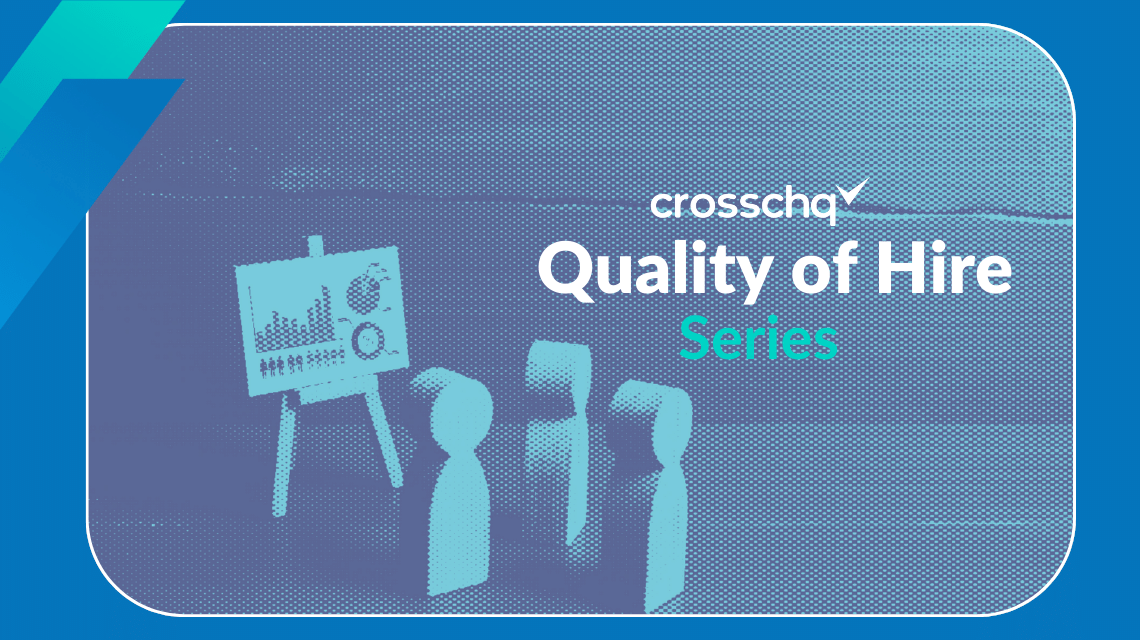

Crosschq Blog
Quality of Hire Questionnaire

Effective talent acquisition is dependent on data. TA professionals rely on a number of critical metrics which allow them to make better hiring decisions for your company. . Leaning on the information they glean from relevant business stats like retention, source of hire, and time-to-fill, your dedicated talent team is able to improve their process, and leverage the hiring strategy itself to better support organizational objectives.
One metric, Quality of Hire (QoH), stands head-and-shoulders above the rest as an insight-giving thing to track. However contributing factors to employee quality are often seen as subjective, and many companies struggle to measure or use this metric effectively.
But getting started is the hard part. The tricky thing with QoH is figuring out how to quantify that subjective data so it can be combined with your other KPIs to deliver an actionable output. Using a Quality of Hire questionnaire allows you to do just this. Let’s dive in.
What is Quality of Hire?
The Quality of Hire metric tracks the benefit which new employees bring to your company over a certain period of time. It is a multi-faceted metric, involving a number of both qualitative and quantitative KPIs that come together to express the relative value of an individual worker.
KPIs which inform your total QoH metric include:
- Retention.
- Job performance.
- Cultural add/alignment.
- Engagement.
- Time to productivity.
- Employee lifetime value.
- Growth potential.
- Attitude.
Some of these KPIs are easy to measure through simple data tracking. Others are dependent on anecdotal feedback, whether from colleagues, leadership, or the employee themself. Furthermore, social factors like culture-add are wholly dependent on the company’s idea of what this means – it is not standardized across industries, and thus contributes to the inherent complexity of this metric.
But Quality of Hire can also be extremely valuable to those companies that get it right. The insight it gives empowers organizations to continuously improve their hiring strategy and bring on dedicated, talented employees who can support the business over the long term.
Why you need a QoH questionnaire
For organizational impact, you need to be able to assess QoH across your workforce as a whole. One employee value should be comparable to another. You need a way to standardize how you measure the more elusive elements of your Quality of Hire metric, and that’s where the questionnaire comes in.
A well-designed QoH survey solicits clear and actionable feedback from managers, colleagues, and sometimes the employee themself, to both measure and provide context for an individual’s effectiveness in the workplace. It allows these important (and sometimes subjective) data points to be factored in with other numeric statistics, like retention, to create a complete picture of the individual’s professional quality.
The Quality of Hire metric will empower your organization to make smarter hiring decisions – and the questionnaire is going to help to feed that metric.
How to make a QoH questionnaire work
Your QoH questionnaire can be used over and over again, for as long as the employee is with your organization. However the first 12 months of your new hire’s tenure are the most important for generating an actionable QoH output, so consider soliciting your surveys once every 3 to 6 months within the first year of bringing your new employee on board.
Remember also to compare answers, especially from the employees themselves: problems affecting multiple new employees, as told in their questionnaires, may reveal deeper problems within the talent acquisition process, which your team may then work to quickly address.
Sample QoH questionnaire
So what questions should you ask on your survey? We’ve included three sample questionnaires below to distribute to your new hire, and those with insight into their work. These questionnaires include a combination of rated answers, which help to scale relative employee value, and short-answer questions to provide context to the respondent’s experiences.
These sample questionnaires are short, and by no means exhaustive. Remember to include questions on your own survey which gain the most actionable insights according to your company’s definition of employee value.
For managers
- On a scale between 1 and 10, how would you rate how well your employee fits within their new position? Please explain your answer.
- On a scale between 1 and 10, how would you rate how well your employee’s skills meet the requirements of their new position? Please explain your answer.
- What is, in your opinion, your new employee’s potential for professional growth?
For colleagues
- On a scale between 1 and 10, how would you rate your colleague’s willingness to work as part of a team? Please explain your answer.
- How quickly has your colleague adapted to the responsibilities of their new role?
- What is your colleague’s attitude towards their work responsibilities?
For employees
- On a scale between 1 and 10, how well do you feel your skills meet the requirements of your new position? Please explain your answer.
- On a scale between 1 and 10, how prepared did you feel by the onboarding process to fill the responsibilities of your new role? Please explain your answer.
- Do you feel that your values align with the values of the company?
How CrossChq can help with quality of hire
Or, you could skip the questionnaire and come straight to CrossChq.
CrossChq is a comprehensive hiring intelligence platform that takes your recruiting data and converts it into actionable, impactful TA insights. With CrossChq, Quality of Hire is no longer an elusive, complicated metric, but instead a power tool for building better recruitment practices.
Take the Guesswork
Out of Hiring
Schedule a demo now



%20-200x43.png)




